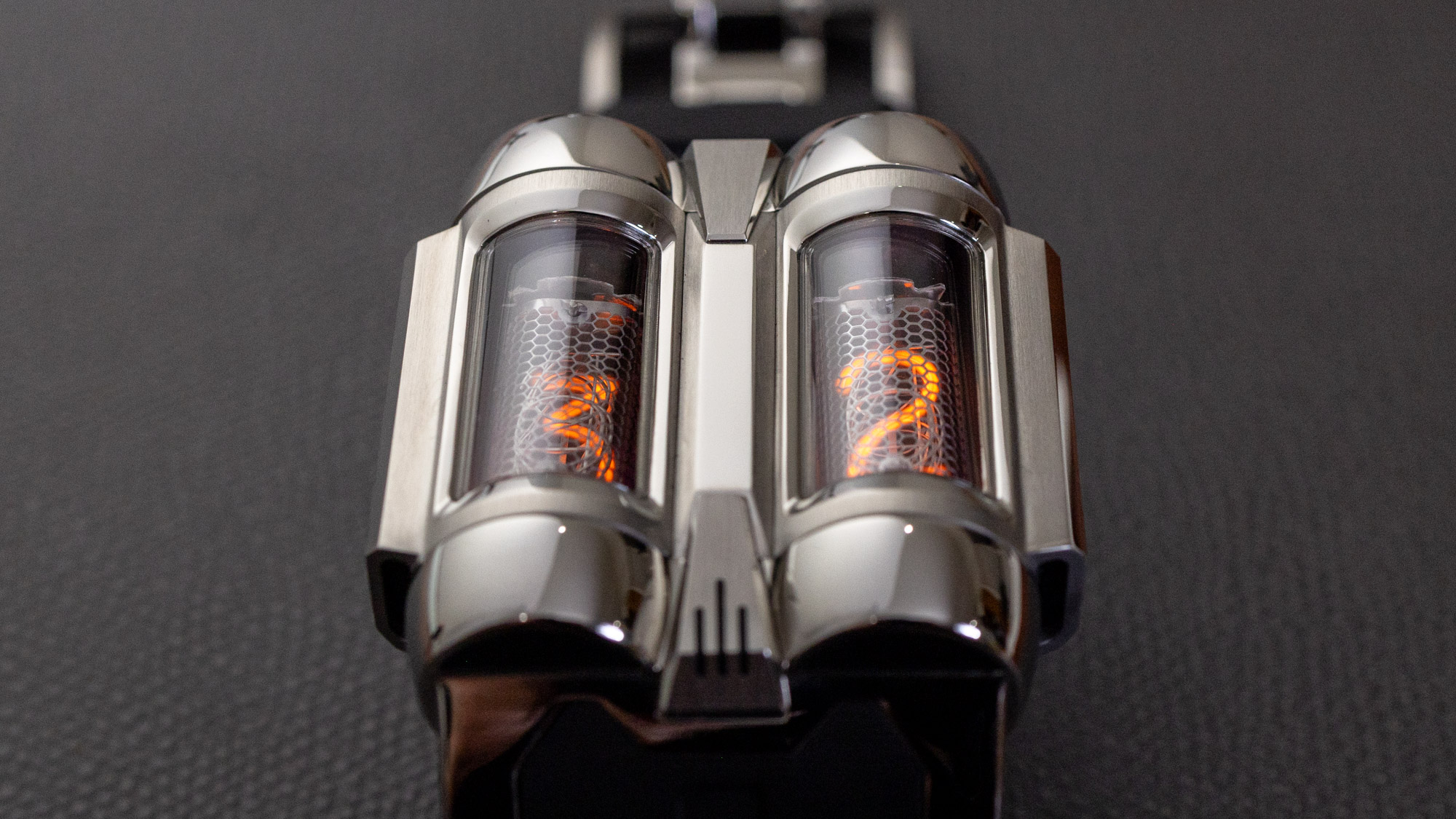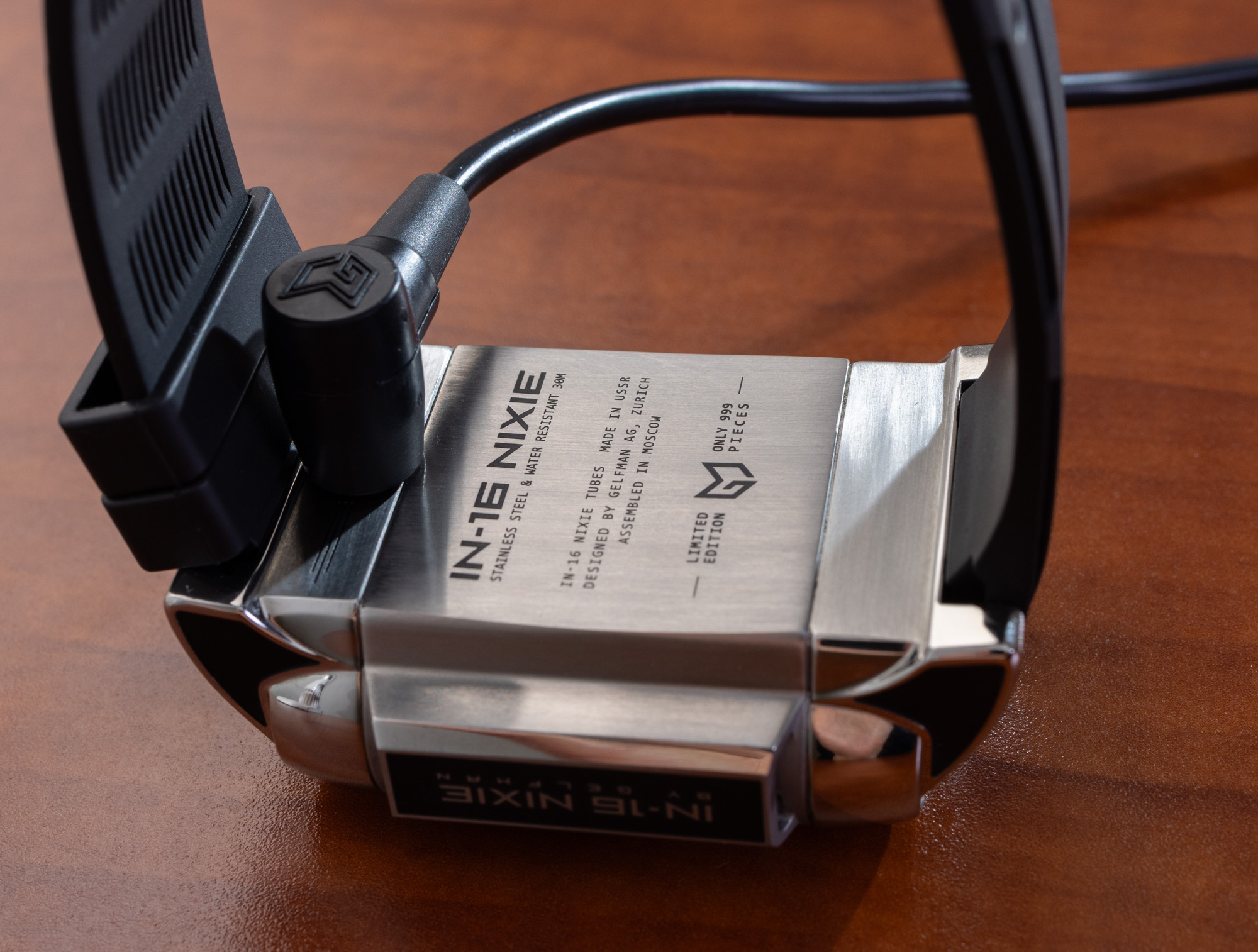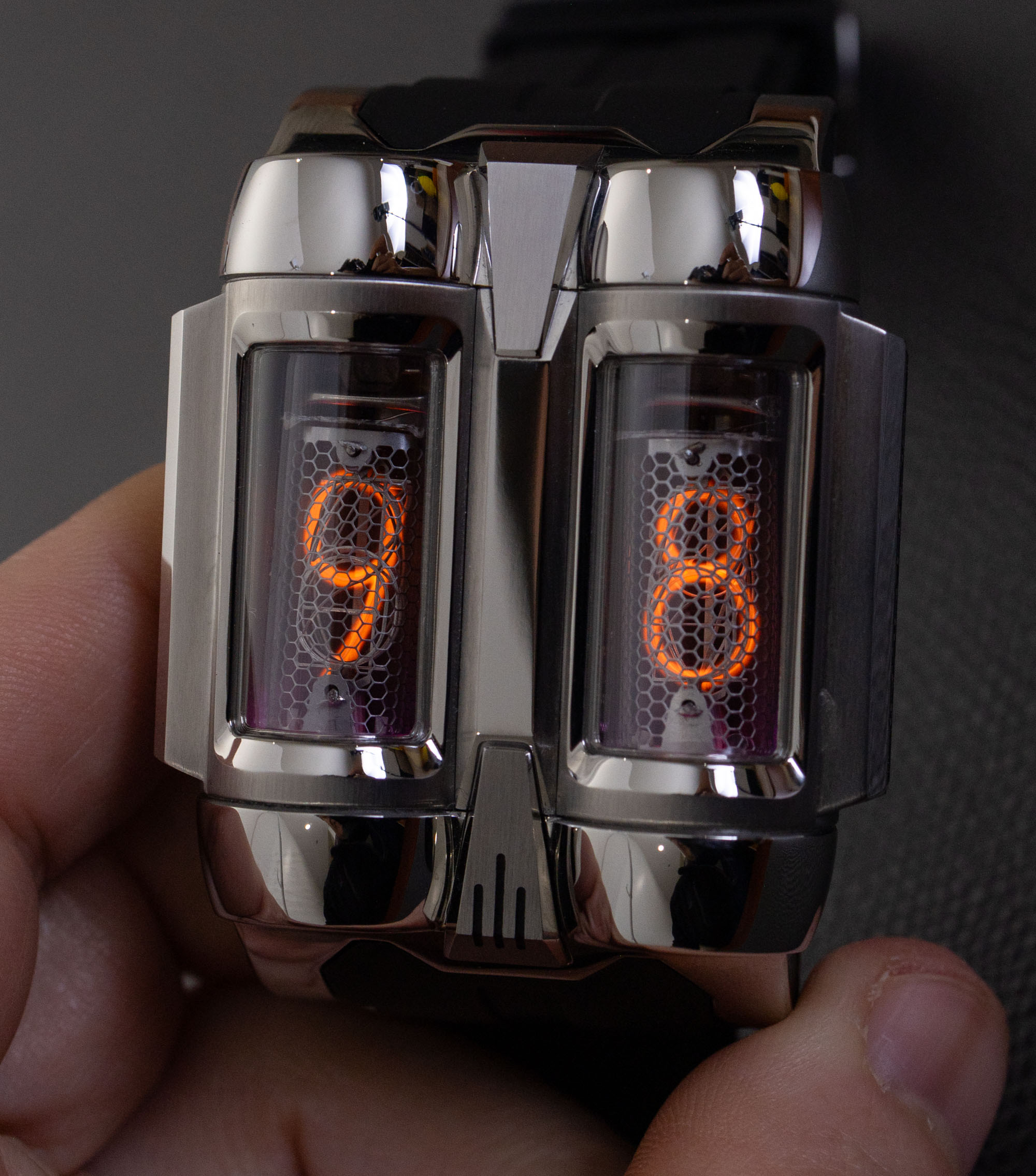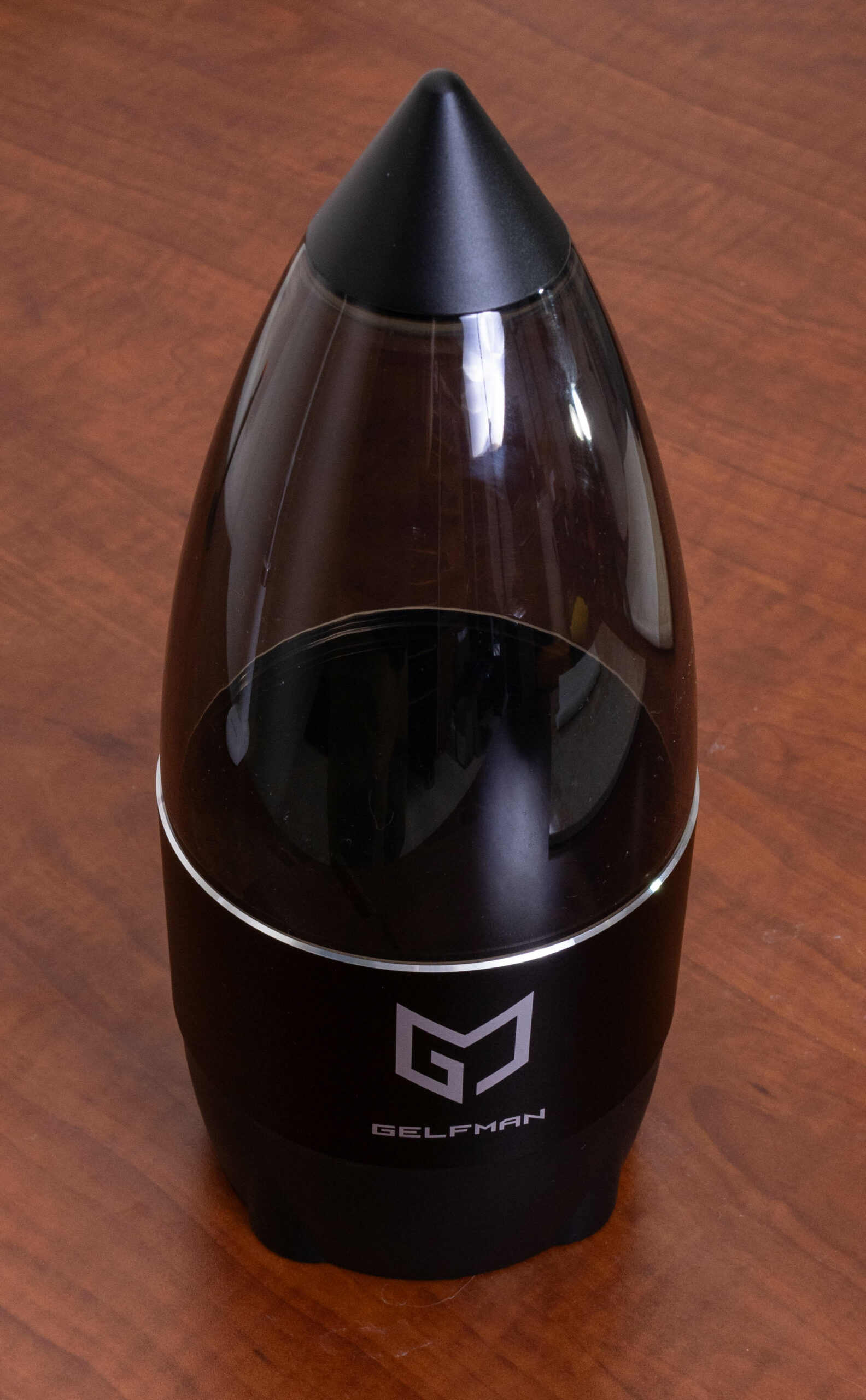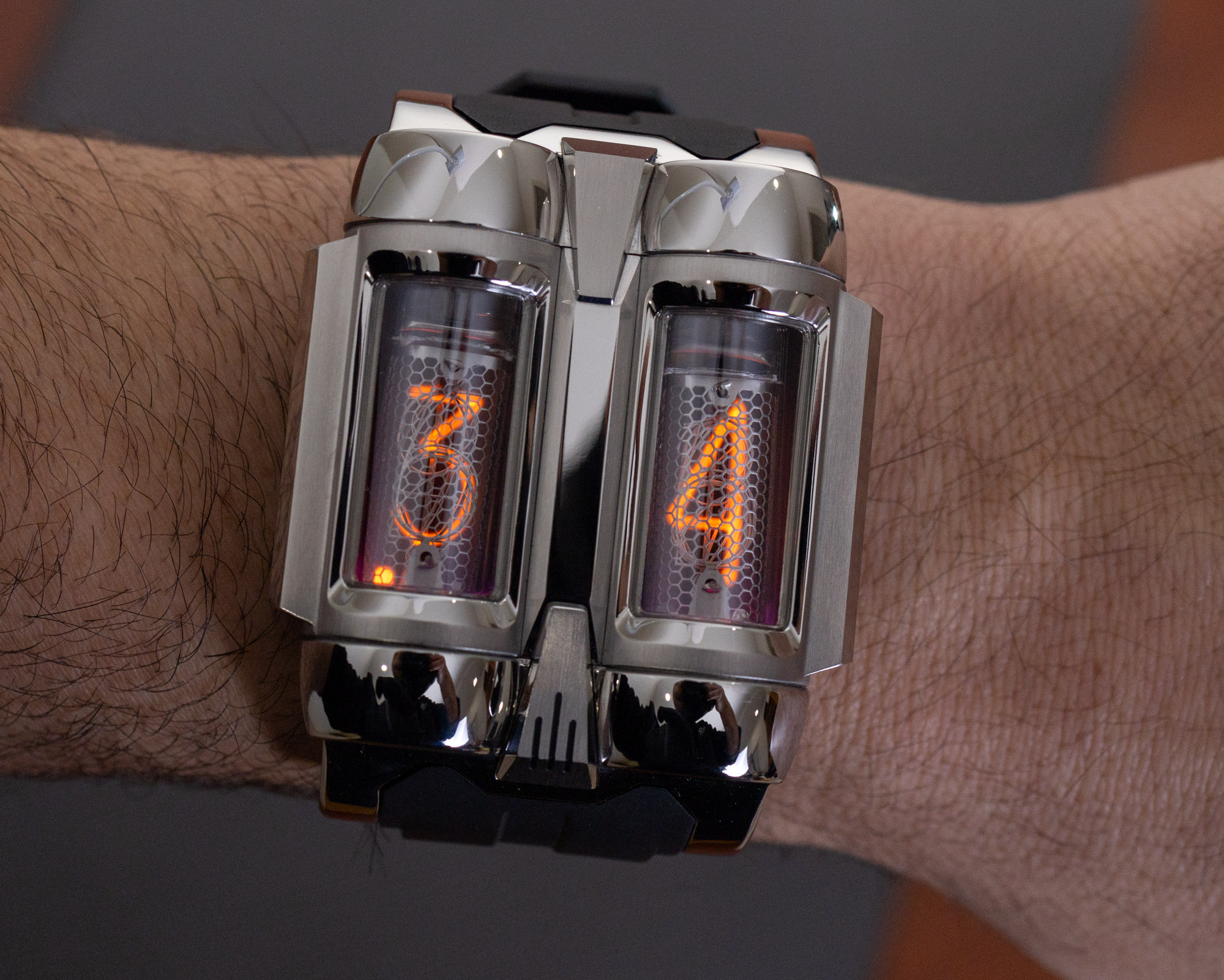
For people like me, the Gelfman IN-16 Nixie watch is a gadget of absolute beauty. There is no other luxury wristwatch of its type on the market today, and it represents the type of wearable time-telling technology that only years of dedicated perseverance can achieve. Accordingly, my journey with the development of the IN-16 Nixie goes back at least 11 years to 2012 when I first met the founder of this brand — the enigmatic Ilya Gelfman — in Moscow. Gelfman is someone who has always had hands in different parts of the watch industry and is among the world’s most sincere collectors of both antique and thoroughly modern timekeepers. The development of the IN-16 Nixie watch is really something only a personality like his own could push past the idea phase.
In 2012, I knew what a Nixie tube was, but I’d never seen one in person. Together with Gelfman in Moscow, I found myself standing in an attic filled with boxes upon boxes of new old stock Soviet Russian Nixie tubes of all types and varieties. The USSR manufactured large volumes of Nixie tubes as part of pre-computer screen display systems. Everything from submarines to power plants used Nixie tubes to display information readouts. As far as I know, Russia stopped making Nixie tubes after the fall of the USSR, and their use in machinery and devices became obsolete with the introduction of modern forms of screens and digital displays. With that said, little else looks like a Nixie tube, and their sheer visual appeal and fascination make the glowing digital tube still captivating to look at today. Gelfman acquired loads of these amazing little tubes, but it would take some years before his idea became a wearable reality.

A Nixie tube is essentially a fancy incandescent light bulb. In a traditional light bulb, a coil in the bulb heats up and excites gas in the tube which creates most of the bright visible light. A Nixie tube works similarly in that it also has coils that are lit up. Only in a Nixie tube, the coil itself is what is important as opposed to a bright gas mixture that lights up. Instead of one coil, there are at least 10 in a standard Nixie tube, and sometimes more. Each of these coils can light up independently and are shaped like digits. Thus, depending on the coils lit up, a different numeric shape can be displayed. Nixie tubes worked in conjunction with computing equipment that would display information via Nixie tubes in the form of (mostly) strings of numbers. Nixie tubes came with the added benefit of glowing bright and thus being legible in the dark. Nixie tubes were often placed in rows so that long digital readouts could be displayed, with the underlying hardware controlling the number that each tube currently displays.
Accordingly, the Nixie tubes themselves are only about as smart as a traditional lightbulb. Controlling them requires underlying electronic hardware as well as suitable voltage to light them up. For years, people could buy hobby kits to put together Nixie desk clocks and even some wristwatches, though none of the Nixie tube wristwatch kits were particularly small or pretty. They did enjoy some fame, however, because, for a number of years (long before the Apple Watch, of course), Apple co-founder Steve Wozniak famously wore a Nixie tube kit watch. Nixie tubes hit the luxury market in the form of retro-spacey clocks from German artist Frank Buchwald (sold via the MB&F MAD Gallery stores), as well as from the Adatte Design Nixie Time Zone Clock. The Gelfman IN-16 Nixie is the first higher-end timepiece to sport vintage Nixie tubes, all in a refined package with fun and wearability in mind. I want to note that there are some less expensive non-luxury Nixie tube watches on the market. Not all of them have the nicer-looking Nixie tubes and many of them are shoddy or basic in their construction. While there is certainly a price premium for the Gelfman IN-16 Nixie over some of the most basic products on the market, I think that the overall experience and case construction are worth it here, if you are accustomed to wearing luxury timepieces most of the time.
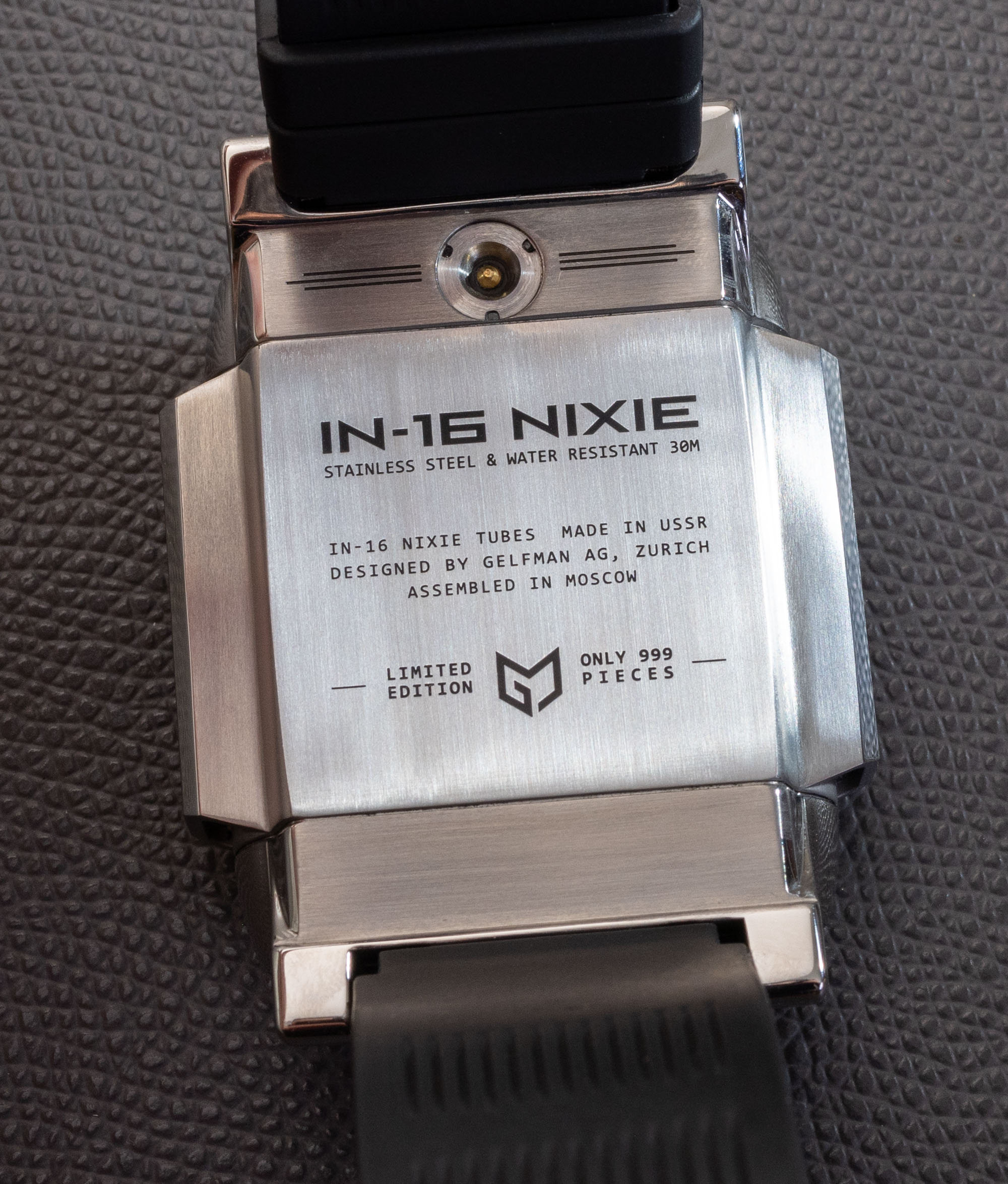
The “IN-16” part of the Gelfman Nixie tubes watch refers to the size and variety of Nixie tubes used in it, which is also the original parts designation number of the tubes. To maintain a relatively compact wearing experience, the case uses two Nixie tubes to display all of the information (as opposed to four or more). These tubes are on the larger side and the digits themselves within the tube are around 13mm tall each — making for a grand viewing experience. Given the bright orange neon glow of the tubes, legibility is excellent. There are also LED lights under the tubes which can be programmed to emit a variety of colors or turned off altogether. The LED lights are also used to indicate information. such as if the watch is charging. The software experience itself is pretty straightforward, and using it in conjunction with the watch is important to get the full functionality out of it.
The Gelfman IN-16 Nixie watch has three pieces of information that can be displayed on the two-digit dial. That includes the hours and minutes (first the current hour displays, and then the current minutes display), the date and month, and also the remaining battery life via percentage. The case has a single pusher on its front and it is used to both activate the display and to cycle through the display information. Much of this can be customized in the software that accompanies the wearing experience. As of writing, only desktop computer software was available from Gelfman, but planned mobile software for iOS and Android appears to be in the works.


There is a single magnetic cable used to both charge the watch and connect it to a device to control the software. The USB cable works well enough, though it is a bit tricky to make sure it is connected properly as it will connect even though the cable might not be perfectly seated in the port. Gelfman claims nearly two weeks of battery life when the watch is fully charged, based on the internal 320 mAh battery. It also claims 10,000 or more hours of life from the IN-16 Nixie tubes themselves – which like light bulbs can burn out. What I understand was noteworthy about USSR Nixie tubes is that they were produced with long service lives in mind, as compared to Nixie tubes produced elsewhere. Given Gelfman’s stockpile of tubes, in the event one breaks or burns out, it should be possible to service the IN-16 Nixie watch and replace any broken tubes with new ones.
Once you’ve set up the Gelfman IN-16 Nixie watch to set the time, date, and all your personal preferences (for example, how bright the display is and how long the information displays on your wrist), you are ready to wear and enjoy it. Gelfman was also smart to ensure that the IN-16 Nixie watch case comes equipped with an accelerometer. This allows you to merely lift the watch case up (or turn it with a flick of your wrist), and the display will activate. Alternatively, you can press the pusher on the front of the case to activate the display. In any event, I think that the active-on-gesture feature is crucial to completing the wearing experience for this and other light-up display watches (such as LED displays which are making a niche comeback).
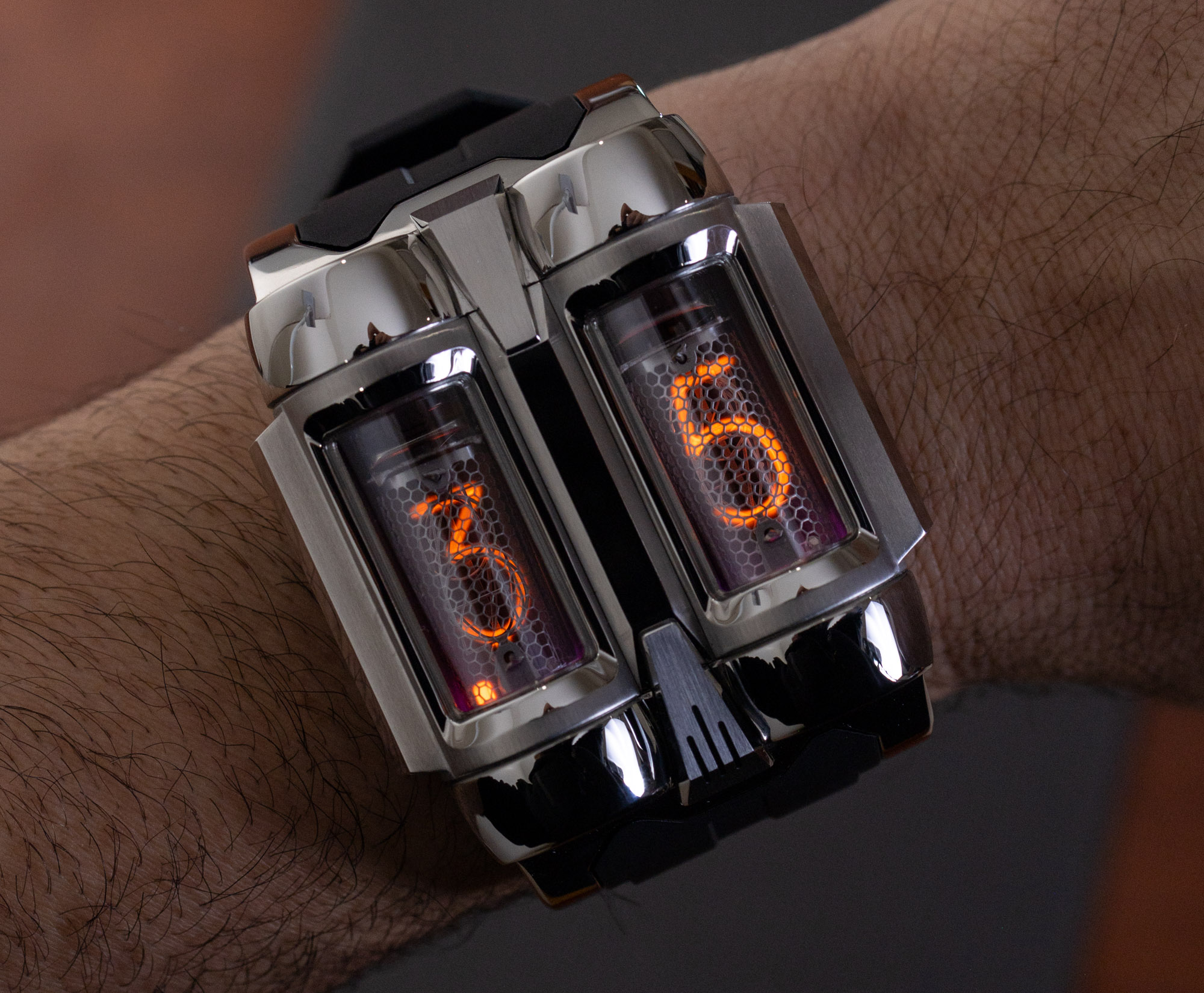

The IN-16 Nixie case itself is produced from hand-polished steel with matte black finished sections and is attached to a bespoke black rubber strap. It is on the larger side at 45.9mm wide, 20.5mm thick, and with a 47.8mm long lug-to-lug distance. The case is water resistant to 30 meters and the crystals are mineral glass but with a harder sapphire coating, as well as AR-coating application. Indeed this package looks large but it is remarkably comfortable. I recall for years seeing Gelfman wearing prototypes. He tested and evaluated this watch himself, making improvements over time. I always asked him with excitement, “Is the Nixie tube watch ready yet?” His response was always calm, with a smile, and he would say something tantamount to “It takes time. Very slow. But it will be ready.” And he was right; it was worth the wait to make sure the kinks were worked out and the wearing and operating experience with Gelfman IN-16 Nixie was as good as it could be.
The space-age look of the watch will not suit all tastes, but let’s be honest here — this is a very cool, albeit niche, timepiece for special collectors. Gelfman made this watch for himself first and foremost. He wanted to evoke nostalgia for mid-20th-century science fiction as well as his interest in wearable gadgets. The watch is certainly showier than it is practical, but the same remark can be said about the majority of luxury watches on the market today. Even though the Gelfman IN-16 Nixie watch has a unique personality in the high-end watch space, it very much fits within the pantheon of utterly interesting wrist toys that people like me are overjoyed to see make it to production. Without love and persistence, watches like the IN-16 Nixie would not exist.


According to Gelfman, the IN-16 watch is assembled in Moscow (fittingly so to continue to legacy of the Soviet tubes), with parts coming from various countries and an overall system that was primarily designed in Zurich, Switzerland. It is such a fun timepiece and story, and I look forward to discussing the IN-16 Nixie watch with others like myself (and Gelfman) who appreciate this type of wearable technological functional art. The presentation box even looks like a Cold War rocket…. Limited to 999 pieces, the Gelfman IN-16 Nixie watch has a retail price of $7,978 USD. Learn more at the Gelfman website.

